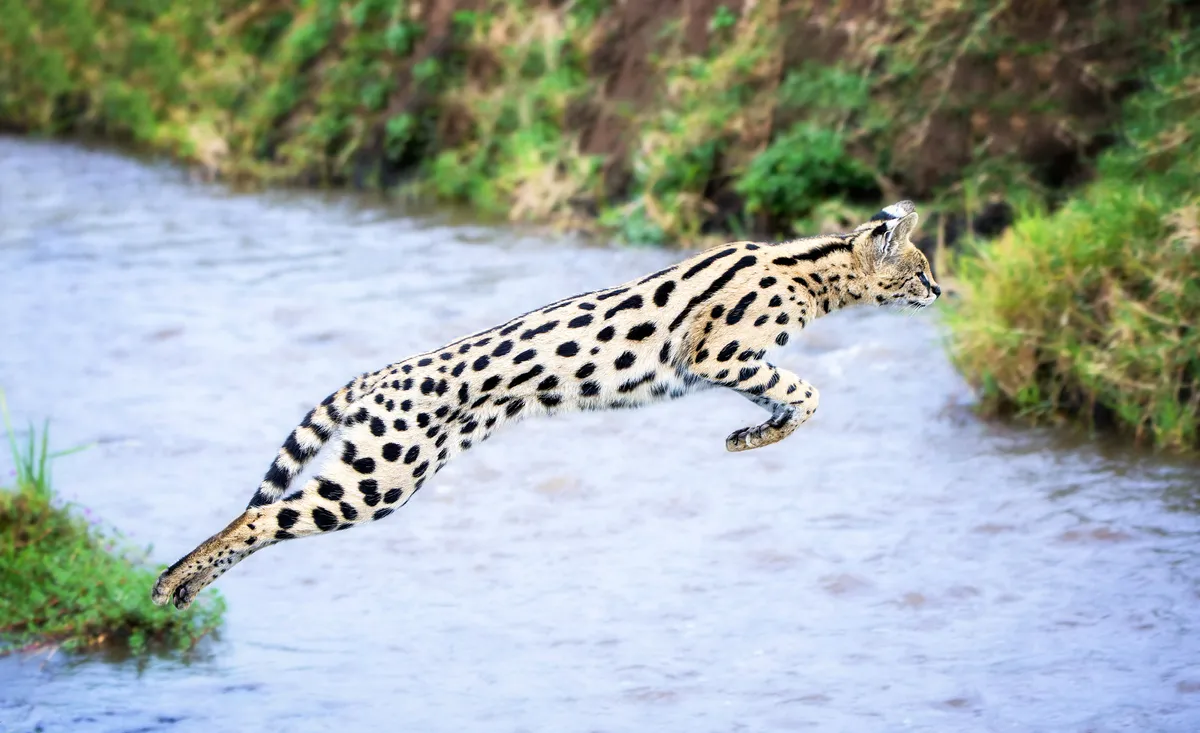Graceful, wild, and built like a runway model with a hunter’s instinct—this guide dives into the captivating world of the serval cat.
How big are serval cats?
Counting the head and body serval cats are between 67cm-100cm long, with the tail adding between 24–35cm on. Males are the heaviest weighing between 10–18kg, while females weigh between 6–13kg.
What do serval cats look like?
Serval cats are a rangy, medium-sized cat with extremely long legs, large ears and a tawny coat with variable black spots. In some individuals the spots merge to form stripes on the neck and back; fine-freckled variants also occur, for example in East Africa.
What do serval cats eat?
Mostly rodents such as swamp (vlei) rats; also birds, reptiles and amphibians. Occasionally wades into water to hunt flamingos and fish.
How fast are serval cats?
Thanks to their long legs, serval cats are one of the world's fast cats with speeds of around 40mph
How high can serval cats leap?
Thanks to their long legs working like a spring, serval carts can leap up to 3 metres high
How do serval cats reproduce?
Serval cats are largely solitary: male and female associate for just a few days to mate. Female gives birth to up to four kittens after a gestation of 67–77 days, and raises them on her own. Male offspring are driven away when they can hunt, usually about one year old; females leave when sexually mature, about a year later.
- Tiny killers, expert swimmers and the grumpiest cats: These are the weirdest wild cats in the world
- Why do cats have slit-shaped pupils and how high can the best feline high-jumper leap? Here are 19 wild cat facts that will boggle your mind
How long do serval cats live for?
Their lifespan is up to 20 years
Where do serval cats live?

The serval is found in much of sub-Saharan Africa, and there are unconfirmed reports of isolated populations in Morocco and Algeri. Their favourite habitat are marshes and reedbeds, and to a lesser extent grassland; also frequents woodland edge. Absent from desert and forest.
Images © Getty Images




